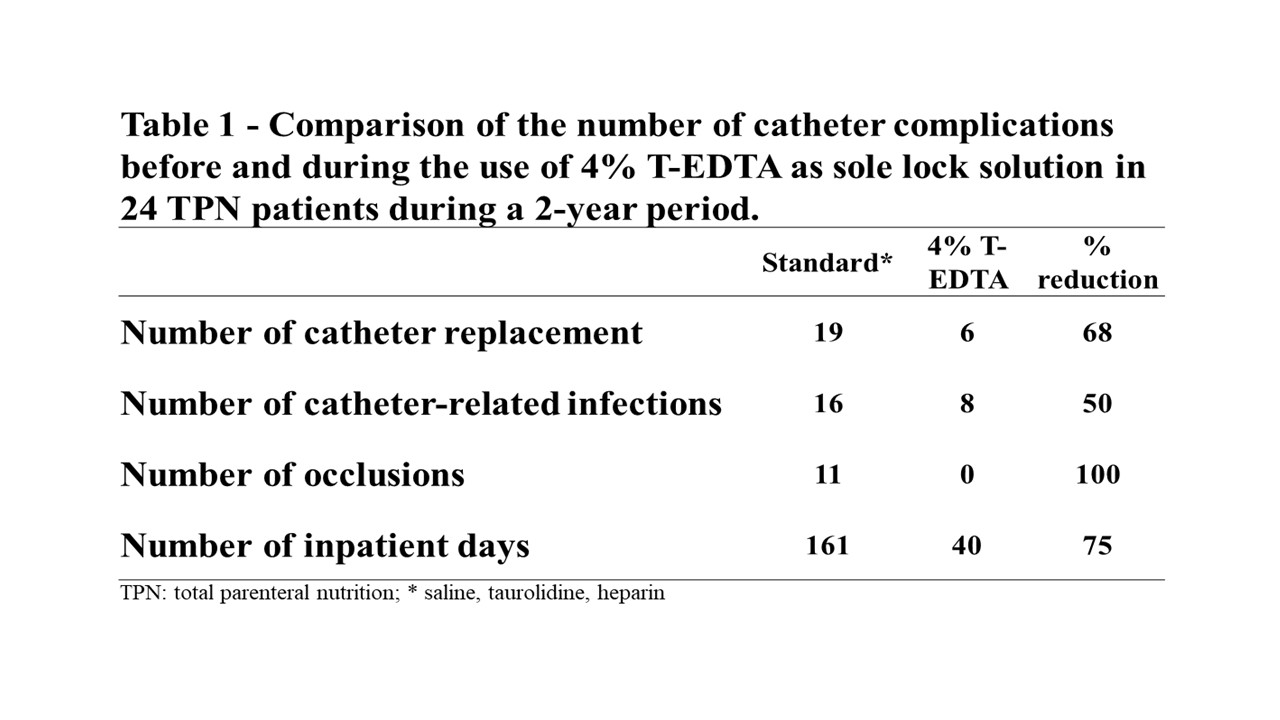Background information
Infections are problematic for total parenteral nutrition (TPN) patients with chronic central venous access devices (CVADs) prone to microbial colonisation and exposed to multiple antibiotic treatments. This catheter is supposed to provide life-saving treatment but makes them vulnerable to central-line associated bloodstream infections (CLABSI). The current standard of care for CVADs is saline or heparin which do not prevent CLABSI.
Objective
The objective of this clinical evaluation was to confirm the clinical safety and efficacy of a non-antibiotic antimicrobial catheter lock solution containing 4% Tetrasodium EDTA (T-EDTA) to eradicate clinically relevant microbes and associated biofilms colonising the lumen of CVADs of TPN patients.
Materials and Methods
Patients with CVADs were selected across Canada based on a high risk of complications: CLABSI and occlusions. The latter determined from the high use of alteplase. Selected TPN patients used a 4% T-EDTA lock solution as the sole lock solution rather than their standard of care. Main clinical endpoints included reduction of alteplase use and infection, and safety assessment. Before and during data were collected.
Results
Data collected over a 24-month period in 24 TPN patients show both a clinically relevant decrease in CLABSI by 50%, in-hospital days by 75%, catheter replacement by 68% and alteplase use by 100% when the standard lock solution was replaced by 4% T-EDTA. No adverse events including hypocalcemia was observed with its use over time. Findings correlate with previously published in vitro results and supporting a multicentre, randomized controlled clinical trial showing significant eradication of clinically relevant microorganisms by 87% within CVADs of hemodialysis patients by 4% T-EDTA compared to heparin.

Conclusions
Intraluminal microenvironment of a CVAD is ideal for polymicrobial biofilm formation where quorum sensing promotes antibiotic resistance and provides the perfect hiding spot for superbugs. There is a close relationship between clot, bacteria and biofilm propagating CVAD complications: infections and occlusions. Results from this evaluation demonstrate clinically relevant reduction in CVAD complications with the use of a 4% T-EDTA lock solution. Routine use of an effective non-antibiotic antimicrobial solution is crucial in reducing the risk of CLABSI within Canadian hospitals and addresses the need to use alternatives to antibiotic agents.
.jpg )